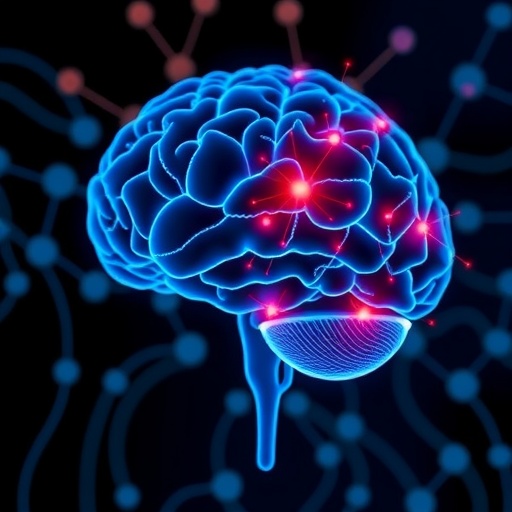Recent advancements in the understanding and treatment of Parkinson’s disease signal a promising development in neuroscience. The hard-to-diagnose condition, characterized by motor dysfunctions like tremors and rigidity, has historically presented challenges for both researchers and clinicians alike. However, groundbreaking work from a collaborative team at the Korea Advanced Institute of Science and Technology (KAIST) has unveiled a pioneering approach that integrates artificial intelligence (AI) with optogenetics to enable precise diagnosis and treatment of the disease in mouse models.
Difficulties in early detection of Parkinson’s disease have long hampered efforts for timely intervention. Traditional diagnostic methods often lack the sensitivity required to identify subtle changes in motor function during the initial stages of the disease. In response to these challenges, KAIST researchers have harnessed the power of AI alongside optogenetic techniques to create a more refined diagnostic framework. This innovative combination not only facilitates early detection but also provides an avenue for more effective therapeutic evaluation.
The research team, which included experts from various divisions within KAIST, conducted extensive studies using a mouse model of Parkinson’s disease. The model incorporated male mice that exhibited abnormalities in alpha-synuclein protein, a hallmark of the disease often used to simulate its progression in humans. Within this context, the consortium implemented AI-driven 3D pose estimation to analyze over 340 distinct behavioral features related to the mice’s motor functions.
By distilling these complex data into a singular Parkinson’s disease score (APS), the researchers established a quantifiable metric that indicated the severity of the disease. Remarkably, this score was able to demonstrate significant differentiation from control subjects as early as two weeks post disease induction. The APS proved to be a more sensitive measure than traditional motor function tests, identifying key diagnostic features such as altered stride length, asymmetrical limb motion, and tremors.
In an effort to establish the specificity of the APS to Parkinson’s disease, the researchers extended their analysis to a mouse model of Amyotrophic Lateral Sclerosis (ALS). Given that both diseases can result in motor dysfunction, it was critical that the APS score did not reflect general motor decline but rather highlighted unique indicators pertaining to Parkinson’s. The findings confirmed that the APS score remained low in the ALS model, reinforcing that the observed behavioral alterations were characteristic of Parkinson’s alone.
Beyond diagnosis, the research team’s contributions extended into therapeutic interventions. Utilizing optogenetics technology known as optoRET, they employed light to modulate neurotrophic signals in the brain of the affected mice. This groundbreaking approach allowed for precise management of movement disorders associated with Parkinson’s. Specifically, when the light was applied in a regimen of alternating days, notable improvements in gait, limb movement, and tremor severity were recorded. Moreover, there was evidence suggesting that this method may offer neuroprotection to dopamine-producing neurons, a critical factor in the pathology of Parkinson’s.
In sharing insights from this transformative research, Professor Won Do Heo emphasized that the study represents an unprecedented achievement in preclinical research frameworks. The integration of AI-based behavioral analysis with optogenetics characterizes a significant leap toward the establishment of personalized medicine strategies for Parkinson’s patients, which could potentially revolutionize treatment paradigms in the realm of neurodegenerative disorders.
The remarkable synergy between AI and bioengineering showcased in this research underscores not just the scientific rigor but also the collaborative ethos driving the work at KAIST. Relying on interdisciplinary input from teams specializing in biological sciences, cognitive neuroscience, and basic science, the project epitomizes the power of teamwork in advancing medical science.
As the project moves forward, researchers are exploring avenues for expanding the applicability of their findings to human subjects. Dr. Bobae Hyeon, the lead author of the study, is currently undertaking additional research to further the potential of cell therapy for Parkinson’s at Harvard Medical School’s McLean Hospital. Supported by initiatives like the Global Physician-Scientist Training Program, this ongoing research aims to bridge the gap between preclinical findings and clinical applications.
The implications of these findings are far-reaching. Parkinson’s disease affects millions of individuals worldwide, and the contributions from KAIST pave the way for future innovations in diagnostic and therapeutic approaches. Stakeholders in the health industry will undoubtedly keep a keen eye on how these developments evolve and the potential they hold for improving patient outcomes in the battle against neurodegenerative diseases.
As the research landscape continues to evolve with technological advancements, the fusion of artificial intelligence with biological intervention stands to redefine the boundaries of what is possible in disease management. Future studies are anticipated to refine these methodologies, pushing towards enhanced precision in both diagnosis and therapeutic effectiveness.
In summary, the efforts made by KAIST researchers not only enrich the scientific community’s understanding of Parkinson’s disease but also ignite hope for those affected by this challenging condition. The proven capability to utilize AI for enhanced detection and optogenetics for therapeutic intervention signals a new frontier in medical research and provides a template for future studies aimed at elucidating complex neurological disorders.
Subject of Research: Not applicable
Article Title: Integrating artificial intelligence and optogenetics for Parkinson’s disease diagnosis and therapeutics in male mice
News Publication Date: September 22, 2023
Web References: http://dx.doi.org/10.1038/s41467-025-63025-w
References: Not available
Image Credits: KAIST
Tags: advancements in neurotherapeuticsAI in neurosciencealpha-synuclein protein studiescollaborative research in neuroscienceearly detection of Parkinson’sinnovative diagnostic frameworksKAIST Parkinson’s studymotor dysfunction diagnosisoptogenetics for diagnosisParkinson’s disease researchprecision medicine in neurologytherapeutic evaluation in Parkinson’s





